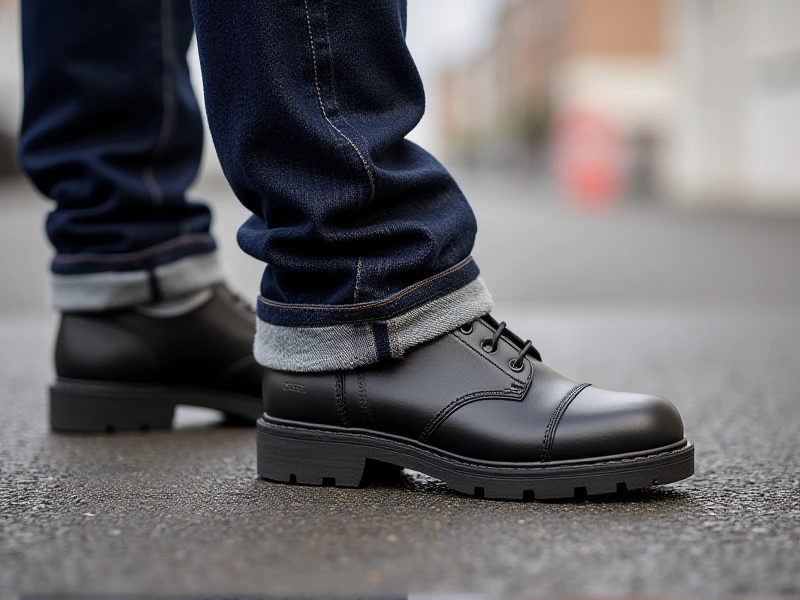Choosing the Right Safety Boots: Protection That Doesn't Compromise Comfort or Performance

High-risk work environments demand reliable foot protection beyond ordinary footwear. Safety boots are crucial for preventing debilitating injuries from falling objects, punctures, slips, electricity, and harsh chemicals. Choosing the right pair isn't just about compliance; it's an investment in preventing accidents and ensuring worker confidence and productivity.
What Defines a Safety Boot?
Safety boots are specially engineered protective work boots incorporating reinforced features like steel or composite toe caps to shield toes from impact and compression injuries exceeding standardized force levels (ASTM F2413). Essential components often include:
- Safety Toe Cap: Steel (traditional strength), Aluminum (lighter), or Composite Materials (lighter, non-metallic, often non-conductive).
- Puncture-Resistant Midsole: Kevlar® or steel plate protecting against sharp objects penetrating the sole.
- Slip-Resistant Outsoles: Specialized treads (e.g., rubber compounds, patterns like lug or cleated) designed to grip wet, oily, or uneven surfaces effectively, reducing fall risks. Look for SR or SRC ratings.
- Electrical Hazard Protection: EH-rated boots provide a secondary barrier against accidental contact with energized circuits (often via non-conductive soles/heels).
- Metatarsal Guards: Extra protection for the vulnerable metatarsal bones on the top of the foot (additional met guard).
- Waterproofing/Weather Resistance: Membranes like Gore-Tex® or treated leather keep feet dry and warm in harsh conditions.
- Chemical Resistance: Specialized materials resist degradation from oils, solvents, or acids.
Key Selection Criteria
Don’t just grab the cheapest pair. Selecting the perfect safety boot requires understanding your specific job hazards:
- Assess Workplace Hazards: Identify primary risks – impact, puncture, slips, chemicals, electricity, or heat/cold. OSHA standards (like 1910.136) outline general PPE requirements.
- Prioritize Fit & Comfort: Ill-fitting boots cause blisters, fatigue, and pain. Ensure ample toe room, width, and arch support. Break them in gradually. Quality boots offer cushioned insoles, padded collars, and supportive ankle design. Comfort directly impacts compliance and worker well-being.
- Material Matters: Leather offers durability and breathability, while nubuck or synthetics might be lighter or offer specific chemical resistance. Consider breathability for active roles.
- Weight and Sole Flexibility: Heavy boots cause fatigue. Newer composites offer protection at significantly reduced weight. Balance protection with the flexibility needed for mobility (e.g., climbing ladders vs. flat surfaces).
- Required Certifications: Ensure boots meet relevant standards for your industry and region (ASTM F2413, ISO 20345:2011, CSA Z195, etc.). Check for specific ratings (I/75 C/75 for impact/compression, PR for puncture resistance, EH for electrical hazard).
Where Safety Boots are Non-Negotiable
Safety boots are mandatory across industries with significant foot injury risks:
- Construction: Protection from falling debris, rebar punctures, uneven terrain.
- Manufacturing & Warehousing: Heavy equipment, dropped parts, forklift traffic, slick floors.
- Oil & Gas / Petrochemical: Chemical spills, extreme temperatures, heavy machinery.
- Logging & Mining: Chainsaw risks, heavy logs/rocks, sharp protruding objects.
- Electrical Work / Utilities: Electrical hazards requiring EH or static-dissipative (SD) protection.
- Restaurants & Food Processing: Spills, heavy objects, slip hazards.
The Bottom Line
Investing in quality safety boots matched to the specific hazards of the job is fundamental for workplace safety. Look beyond just the toe cap to slip resistance, fit, comfort, and the environmental conditions workers face daily. Reputable brands like Timberland PRO, Red Wing, Wolverine, and CAT Footwear offer diverse options. Remember, protected feet are productive feet – choosing the right safety boot is a worthwhile investment for any safety-conscious business.